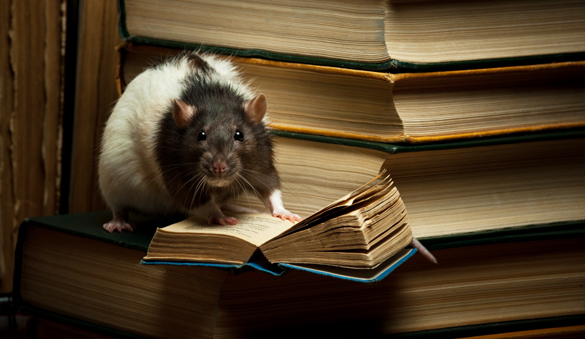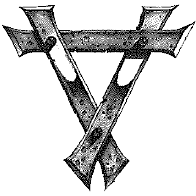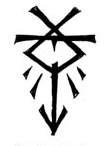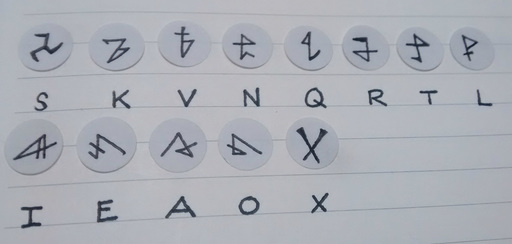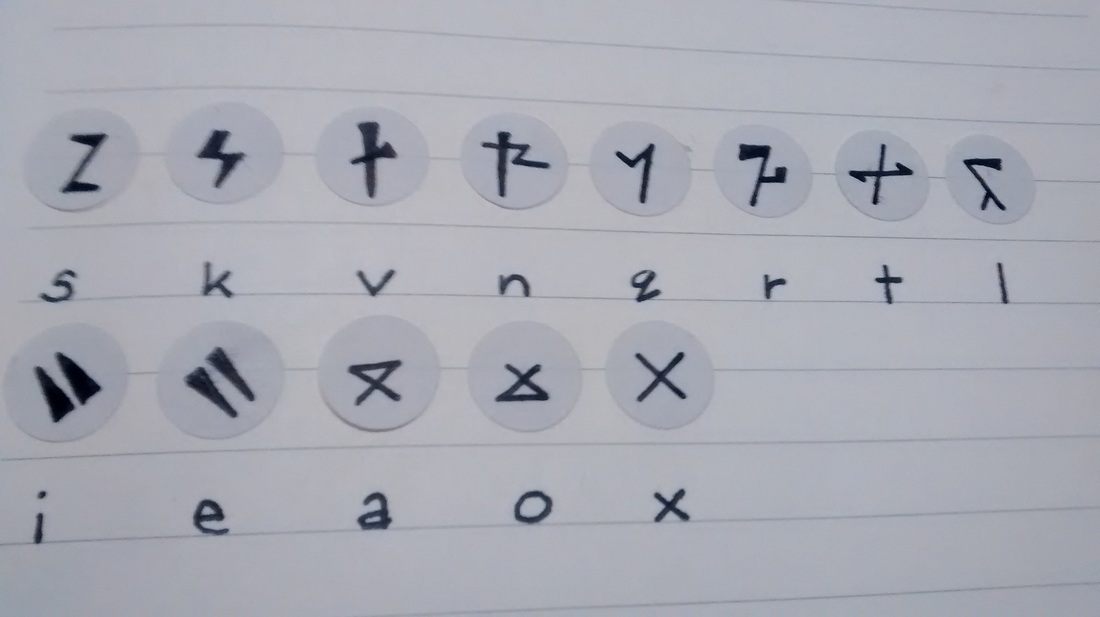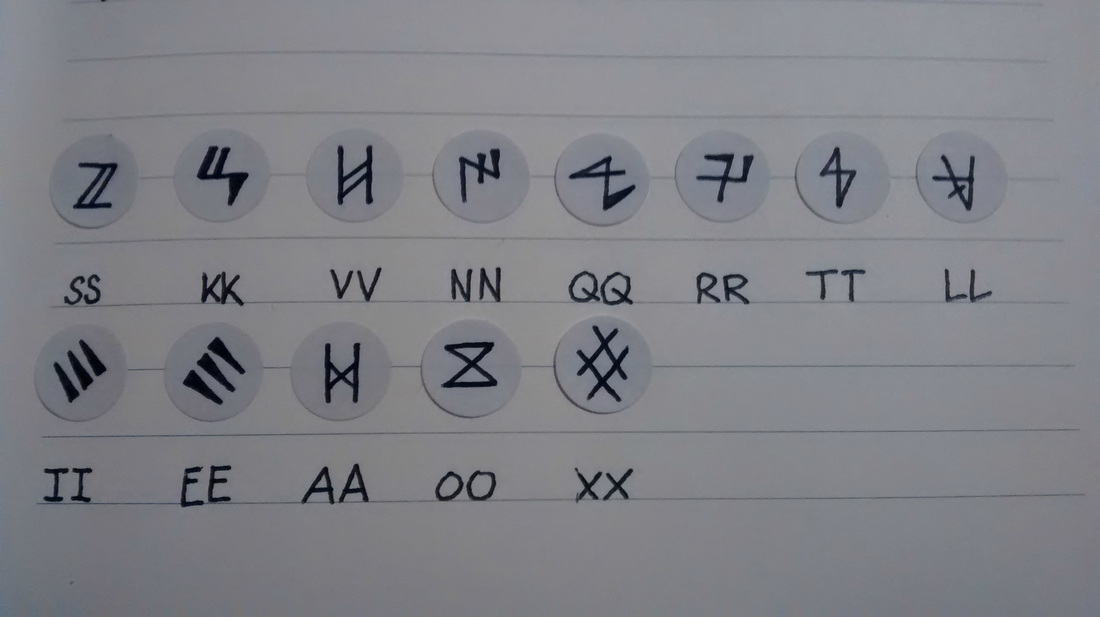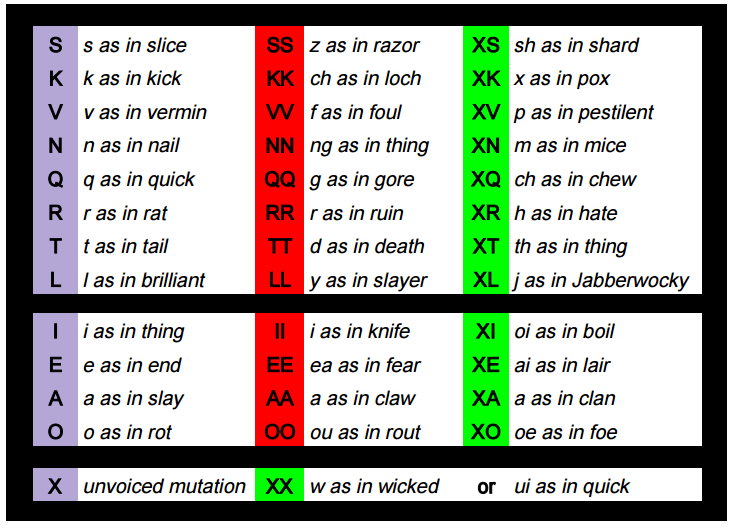The Skaven writing system developed as a series of runes or pictograms. These grew in number as time went one, now numbering in the thousands, though only a few Skaven can identify more than a few of the most important ones. The runes tend to have complex meanings and associations, encompassing several related concepts.
The most frequently used and easily identifiable is the Symbol of the Horned Rat, which signifies not only the deity of the Skaven but also the Skaven race as a whole.
The most frequently used and easily identifiable is the Symbol of the Horned Rat, which signifies not only the deity of the Skaven but also the Skaven race as a whole.
A variation on this shows the common symbol for clanrats:
Other commonly identifiable symbols include the runes of the four greater clans, and a fifth rune denoting the order of Grey Seers:
GREY SEERS
As the Skaven developed in the use of magic and technology, the utility of a standardised alphabet would have quickly been apparent, especially among the Warlock Engineers of Clan Skryre.
The Skaven alphabet is comprised of 13 letters, approximated in a Latin-based writing system as 8 consonants, 4 vowels, and the 13th letter, "X", which primarily serves as an unvoiced mutation.
Skaven letter-runes are represented by both a Formal and Informal symbol. While its tempting to compare these to upper and lower-cases in English, their application in Skaven writing is nowhere near as consistent. Though it is standard practice that any nouns (proper or otherwise) are begun with a Formal letter, beyond that both symbols are used pretty much interchangeably, seemingly at whim.
Another peculiarity of Skaven writing is that, in the case of nouns where a commonly used pictographic symbol already exists, the rune commonly replaces the first letter of the word when written out. This is also the case insofar as when the names of Skaven personages are written out, the first letter is often replaced with the symbol for their clan.
The Skaven alphabet is comprised of 13 letters, approximated in a Latin-based writing system as 8 consonants, 4 vowels, and the 13th letter, "X", which primarily serves as an unvoiced mutation.
Skaven letter-runes are represented by both a Formal and Informal symbol. While its tempting to compare these to upper and lower-cases in English, their application in Skaven writing is nowhere near as consistent. Though it is standard practice that any nouns (proper or otherwise) are begun with a Formal letter, beyond that both symbols are used pretty much interchangeably, seemingly at whim.
Another peculiarity of Skaven writing is that, in the case of nouns where a commonly used pictographic symbol already exists, the rune commonly replaces the first letter of the word when written out. This is also the case insofar as when the names of Skaven personages are written out, the first letter is often replaced with the symbol for their clan.
FORMAL LETTER RUNES
INFORMAL LETTER RUNES
Besides the Formal and Informal symbols, Skaven will also often use shorthand symbols for letters that are Doubled (see below).
DOUBLED LETTER RUNES
Each Skaven letter rune has a single associated sound ("phone"), unlike less regimental languages (such as English), where any one letter is used to represent a variety of phones. However, the phone associated with a letter rune may be modified in one of two ways; by Doubling the letter, or with the addition of the 'X' mutation directly preceding a letter. In this manner, the Skaven alphabet is much more versatile than the small number of letters implies.
The following guide provides the closest English equivalents of the Skaven letter rune phones. The structure of the Skaven mouth produces a variety of sounds generally foreign to human speech. Just as there are a number of palatal and palatal-alveolar phones used by the Skaven that humans can, at best, only approximate, Skaven themselves are unable to accurately reproduce the common English labials (p, b, m, w). Much like a ventriloquist, the Skaven must resort to approximations, often by way of labio-dentals.
As a general rule of thumb, Skaven vocalizations are higher pitched than English is typically spoken, & most consonants are palatalized, giving the tongue a guttural inflection.
The following guide provides the closest English equivalents of the Skaven letter rune phones. The structure of the Skaven mouth produces a variety of sounds generally foreign to human speech. Just as there are a number of palatal and palatal-alveolar phones used by the Skaven that humans can, at best, only approximate, Skaven themselves are unable to accurately reproduce the common English labials (p, b, m, w). Much like a ventriloquist, the Skaven must resort to approximations, often by way of labio-dentals.
As a general rule of thumb, Skaven vocalizations are higher pitched than English is typically spoken, & most consonants are palatalized, giving the tongue a guttural inflection.
The Skaven also utilize a simple but effective base 3 numbering system
SKAVEN NUMERALS
